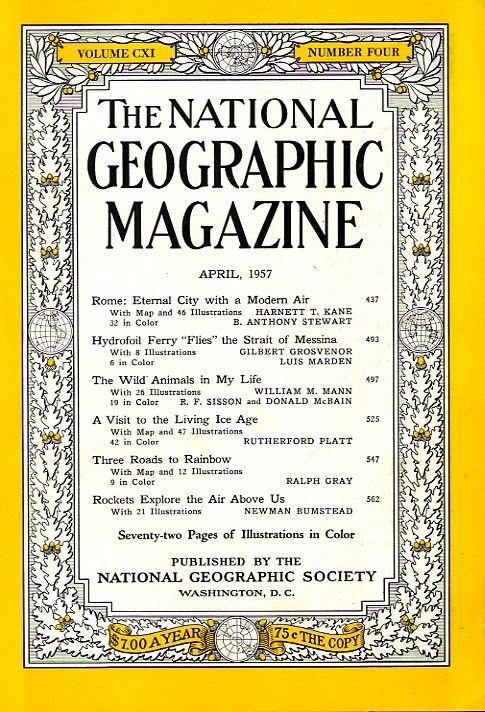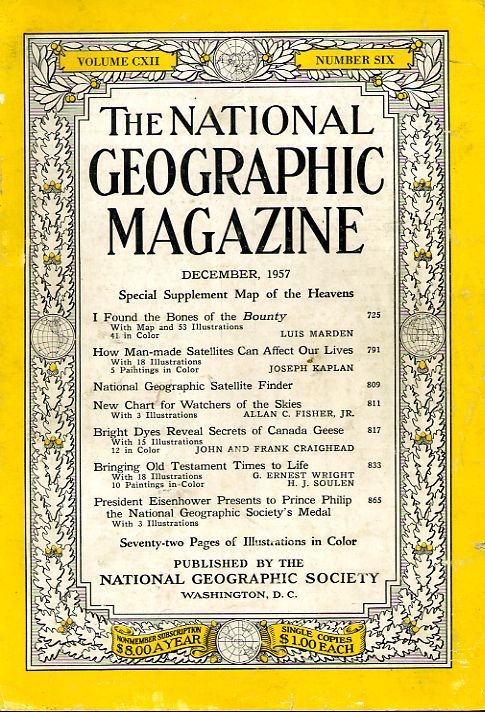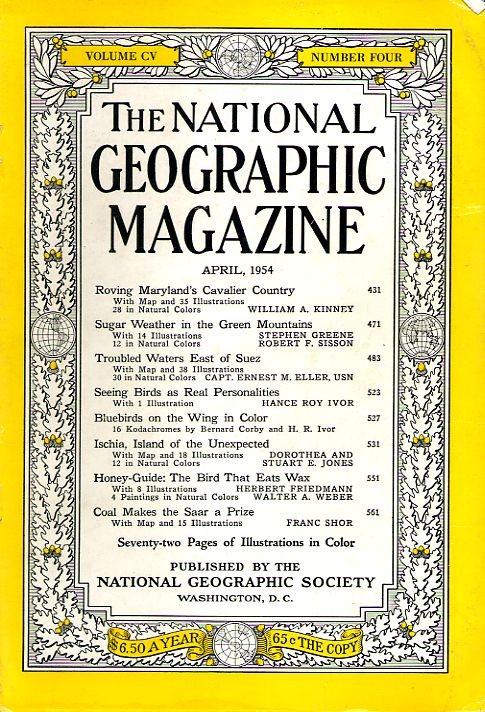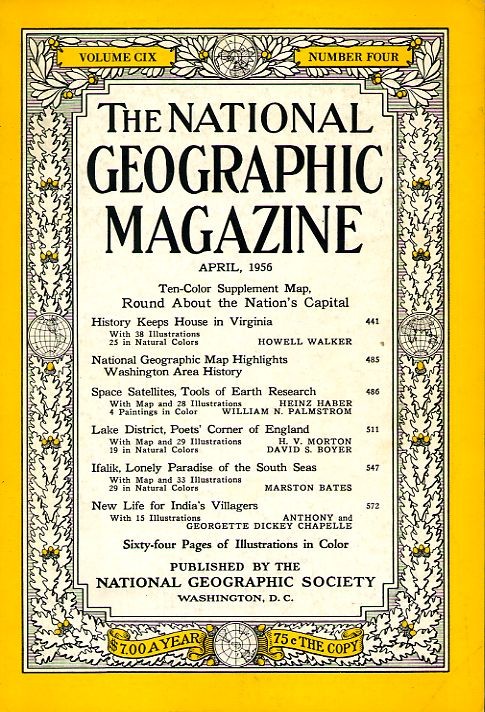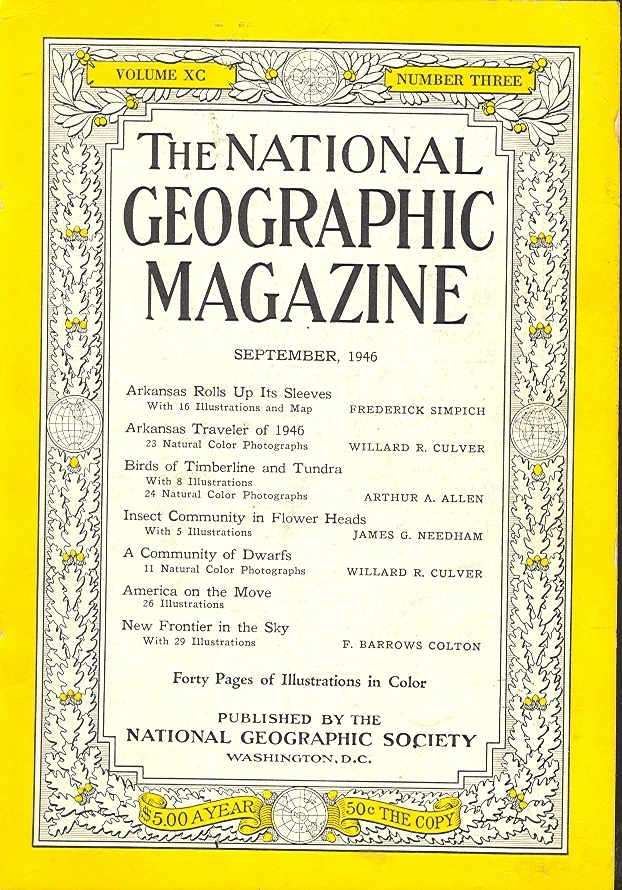National Geographic April 1957
Rockets Explore the Air Above Us: Scientists, Firing Missiles Equipped with Electronic Eyes and Ears, Probe Mysteries on the Borders of Outer Space
Scientists hurl balloons and rockets heavenward in the continuing quest for knowledge of outer space.
A Visit to the Living Ice Age: Plants, Animals, and Men Defy Subzero Weather and Bitter Winds, Perpetuating Life in the Shadow of the North Pole
A seemingly frozen wasteland blooms with color as uniquely adapted plants welcome the chilly Arctic summer.
The Wild Animals in My Life: A Noted Zoo Director, Now Retired, Recalls the Highlights of 30 Years’ Collecting, Trading, and Nursemaiding Birds and Beasts
A former zoo director tells tales from 30 years work of collecting and caring for animals, from aardvarks to zebras.
Rome: Eternal City with a Modern Air
Romans, surrounded by ancient architectural gems, embrace daily life with a contemporary flair.
Three Roads to Rainbow: Few Visit This Hard- to- Reach National Monument in Southern Utah, but Those Who Do Never Forget Its Soaring Arch of Stone
Ralph Gray takes land, water, and air routes to a remote stone arch in Utah and finds the soaring formation a just reward in every case.
Hydrofoil Ferry Flies the Strait of Messina
A new kind of ferry makes a splash with a fast, smooth ride.
